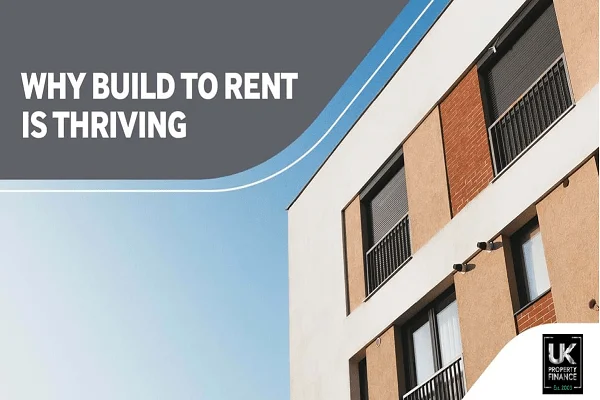Build-to-Rent Rivals Buy-to-Let as Demand for Rental Property Increases

The hot topic of conversation among investors and developers at the moment is the exponential growth of the build-to-rent sector over the last few years. With the ever-increasing demand for rental properties, it isn’t surprising that this niche area of the property market has really taken off.
Up until now, the build-to-rent industry has been mainly led by London, but there are many regional towns and cities that are following suit, leading to a prediction by Savills that the size of the sector will double over the next few years.
Build-to-rent developments are giving the buy-to-let market some serious competition as they are tailored to suit the needs of today’s typical renter, often offering facilities that wouldn’t be seen in a traditional BTL property.
These BTR developments tend to be backed by institutional investors; however, there are always opportunities for individuals to invest in these projects.
The BPF (British Property Federation) has been analysing the performance of the build-to-rent market in order to report on its importance in tackling the housing shortage for UK renters.
While the sector has previously been more predominant in London, there is a significant increase in investment into BTR developments in other areas of the UK, particularly in the North. The last twelve months have seen 13,527 new homes currently under construction in regional cities, which is three times the number seen in London.
BPF director of real estate, Ian Fletcher, says: “The build-to-rent sector continues to expand rapidly, and in 2021 we started to see signs that delivery across the regions is beginning to outpace London.
“It is not just about increasing housing provision; it is a major economic driver, helping attract and retain skilled workers and serving as a catalyst for urban regeneration.
“The strong growth of the BTR sector across the regions will support the government’s levelling-up initiative and help revitalise town and city centres.”
The growth of the build-to-let sector can be mainly attributed to the desperate need for affordable rental property, as demand is significantly higher than supply. With more people taking on mortgages later on in life or deciding that they prefer the flexibility that the renting world offers, it can be safely predicted that the market for BTL will continue to grow in strength.
Buy-to-let developments are typically looking at long-term residents when it comes to the facilities that they offer. For example, communal outside spaces, workspaces, gyms, and other conveniences would suit today’s modern living, particularly for people who work from home.
Data released by BPF shows 70,785 buy-to-rent units in the UK, an increase of 26% from the previous year. 141,215 BTR properties are under construction or currently being planned, which is an increase of ten thousand since 2020.
Manchester, Sheffield, Birmingham, and Liverpool have seen a year-on-year rise of 27% in buy-to-let properties under construction. This is an increase of around 26,820 as of the last quarter of 2021.
Jacqui Daly, a director of residential research at Savills, says: “The geographic spread of build-to-rent shows that many more local authorities are beginning to understand the need for new rental stock, and planning consents are rising as a consequence.
“At the same time, BTR is becoming hugely competitive for investors, with a record level of capital deployed in the sector in 2021. If investors are able to find markets and stocks to invest in, we expect delivery in the sector to double within a few years.”
Another vital advantage of the growth of the build-to-let market is the positive impact it can have on the environment, as developments are designed to support the government’s ESG (environmental and social governance) targets.
Robert Sloss, group chief executive and founder of HUB Residential, says: “City living in well-designed buildings can significantly reduce residents’ carbon footprints, so it is encouraging that metropolitan BTR is increasingly in demand across the country. We want to see an intelligent and measurable approach to carbon reduction and ESG.”
